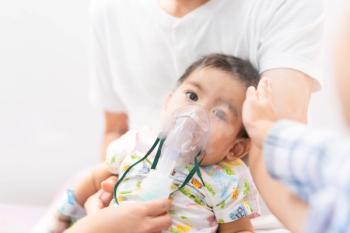
Halloween havoc: Allergies, injury have the potential to make the holiday genuinely scary
Before children get decked out as their favorite cartoon and television characters this Halloween, remind parents that peanuts and milk could be in the candy that young ones receive while trick-or-treating—a situation that could be life-threatening to those who have an allergy to one of these foods.
Before children get decked out as their favorite cartoon and television characters this Halloween, remind parents that peanuts and milk could be in the candy that young ones receive while trick-or-treatinga situation that could be life-threatening to those who have an allergy to one of these foods.
To address this concern, the Food Allergy & Anaphylaxis Network (FAAN) is launching the fourth annual Trick-or-Treat for Food Allergy Coin Collection Campaign, a program for children with food allergies. Instead of candy, millions of children nationwide who have a food allergy will be collecting pennies, nickels, dimes, and quarters for food allergies.
Prizes that include an MP3 player and Icebar Radio with headphones will be awarded to children who raise a certain level of funds.
But food allergy isn't the only Halloween hazard about which to caution parents. A simple checklist of safe behaviors from you can be a meaningful preventative.
Urge parents to keep their little ghosts and goblins safe with these reminders:
- Inspect all candy for evidence of tampering
- Never let a child carve a pumpkin. An adult carving a pumpkin should use a specially designed carving knife, not a kitchen knife, because the former is less likely to get stuck in the thick pumpkin skin. Cut the pumpkin rind and flesh in small, controlled strokes and away from one's self.
- Keep carving knives in a clean, dry, well-lit area
- Should a finger or hand be cut while carving a pumpkin, elevate the hand higher than the heart and apply direct pressure to the wound with a clean cloth to stop bleeding. If continuous pressure does not slow or stop the bleeding after 15 minutes, a visit to the emergency room visit may be required.
- Costumes should be light and bright, so children are clearly visible to motorists and other pedestrians. Trim costumes and bags with reflective tape that glows in the dark.
- Costumes should be flame-resistant and fit properly. A costume that is too long may cause a child to trip and fall.
- Children should wear sturdy, comfortable, slip-resistant shoes
- Use face makeup instead of a mask, which can impair a child's vision
- Drivers should be particularly careful when driving in residential neighborhoods on Halloween
- Children should stay in familiar neighborhoods and be accompanied by an adult at all times
- Children should walk on the sidewalk when trick-or-treating, and never cut across yards or driveways. They should obey all traffic signals and remain in designated crosswalks when crossing the street.
- Trick-or-treaters should approach only houses that are well-lit. Children and accompanying adults should each carry a flashlight to see and be seen.
- It's a good idea to carry a cell phone when trick-or-treating in case of emergency
- Parents who can't be confident about the safety of having their child trick-or-treat in their community or neighborhood should consider sending him (or her) to a local Halloween eventor holding a neighborhood party
- A child who has a food allergy should carry the proper medications, as prescribed by his physician
With this counsel in mind, parents and children can have a safe and spooktacular Halloween!
Newsletter
Access practical, evidence-based guidance to support better care for our youngest patients. Join our email list for the latest clinical updates.









